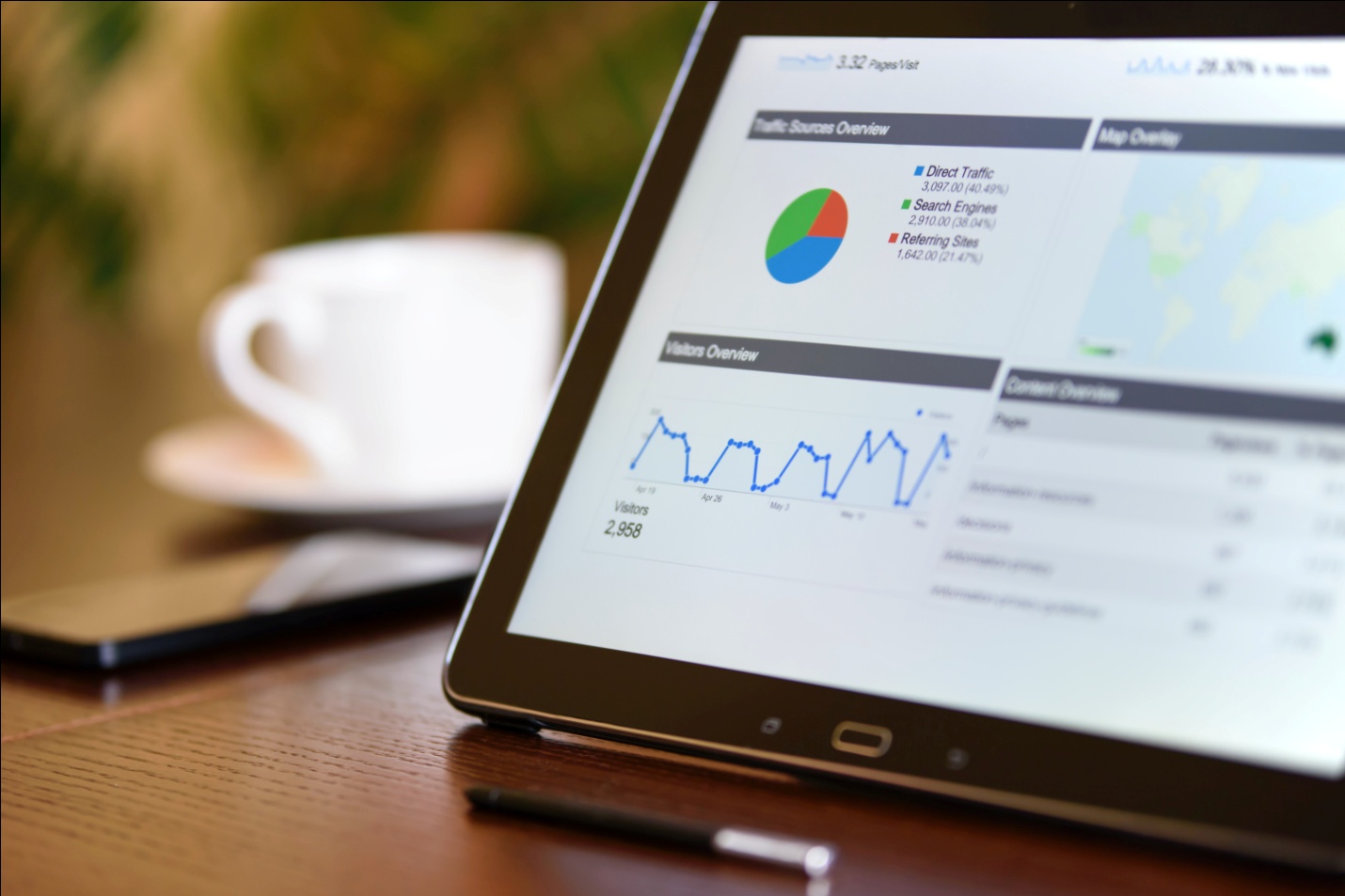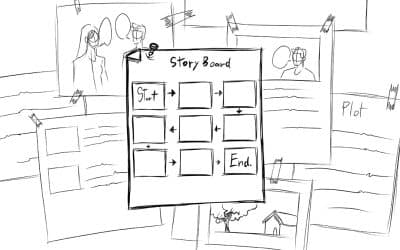Let’s face it, no one has the time to constantly tweak or update their website, nor is it convenient and feasible to consider a website redesign each year. But when you know that online sales have been slipping and certain fixes can get you right on track, it’s never advisable to procrastinate when it comes to updating your website.
For any business, the primary digital platform is its website. It’s important to note here that 94% of the first impressions on websites are design-related and it takes no more than 50 milliseconds for visitors to form an opinion about your website, according to Social Media Today. That’s why you should pay more attention to you website than any other website.
Based on insights from industry experts, here are top signs that your website needs to be updated:
1. High Bounce Rates
Bounce rate represents the percentage of users that land on your site and do nothing at all before leaving or returning to the search results page. They don’t navigate to other pages on the site, use the search bar or menu to find what they’re looking for, make an account, or take any other action before leaving the site. A single-page visit with no engagement gives an impression that the user may have landed an incorrect site or your web design turned them off.
If you start to notice consistently high bounce rates for landing pages, it’s obvious that your site needs a redesign. They’re a clear indication that the site is either making a negative first impression or is not user-friendly. In the latter case, visitors might be facing difficulty finding their desired products on your site. By redesigning a landing page or the entire website based on modern trends, you should be able to address both usability and branding issues in one go.
If you have a limited budget, focus your redesign on webpages that matter the most, such as the Homepage, Services page, or Products page. These are designed to drive sales. Others such as the About Us page or Contact Us pages can be left out.
2. Poor Response on Mobile Devices
Now that users have 24/7 access to the internet through their smartphones, mobile-friendliness is the most important feature for your website nowadays. Since half of all web traffic now comes from mobile devices, your website should be easy to access from them. For example, mobile users search for content without downloads, the need to zoom their screens, or scrolling sideways. In this case, modernizing your site could simply mean eliminating these setbacks from the design.
On your Google Analytics, see how much of your traffic is coming smartphones or tablets. If the numbers signify poor mobile-friendliness, you could be losing an enormous number of potential visitors.
On top of that, Google now prioritizes websites with a mobile-first design when ranking them on search engine result pages (SERPs). This means that if your website is optimized for mobile devices, it’s more likely to rank higher on Google.
This means it’s high time that you update your website to a mobile-responsive design. For 2022 and beyond, this upgrade is a must.
3. Slow Website Loading
Slow page-loading speed is one of the obvious signs that your website needs to be updated, regardless of the device used to access the site. Keep in mind that bounce rate for pages that take more than 3 seconds to load increase by 50%. Even if a potential customer visits your website from a desktop, they won’t wait 2 minutes for your site to fully load. By that time, they’ll be better off leaving the site and doing business with a competitor.
Now that you see how a slow website hurts the web traffic, you should be looking for ways to speed up the site. Start by determining how long your site takes to load.
If you’re a beginner, you will simply enter the URL and hit the ‘Enter’ button to check the speed. Since you have previously visited the site multiple times, this won’t give you the true indication of your website’s actual load times. When you visit a site for the first time, your browser saves information and data, including HTML and images, which are necessary to view the site. The next time you visit that site, it takes considerably less time to load the page.
Instead, use Google Page Speed Insights to assess site speed. The score ranges from 0 to 100 points. A score of 90 or above is considered awesome. A score between 50 and 90 means you need improvement. And if your site scores below 50, its loading performance is extremely poor and you urgently need a web design update.
A web design update to reduce page load time could simply mean minimizing CSS and optimizing images. Other factors depend on the website hosting company and hosting plan you’re using. For WordPress users, removing any unnecessary plug-ins can help. Revisit the plug-ins you’re using and see if they are all really needed to give your website visitors the experience you desire.
4. Difficult to Navigate
Among the various signs that your website needs to be updated is difficulty faced when navigating. In the drive to incorporate creativity, some web developers inadvertently hurt site navigation, an important part of user experience. When designing the webpages and menu, avoid using complicated words. The visitors should know exactly what the link is pointing to.
Using the right words is important but not enough. Be sure to standardize the menu for all webpages, keep the list short. This helps achieve consistency.
Besides, you have different ways to facilitate navigation. You may use images as buttons, image mapping, or links within text, but the links should be working at all times.
More importantly, if a link directs a user to a 404 error page, all other efforts to improve navigation can go in a waste. Therefore, keep reviewing the destination pages and redirects to them. A minor spelling mistake can lead to an error page. When a user expects to find answers to their queries, error pages can be extremely frustrating.
5. Poor SEO Performance
You might be offering the best products or services in the industry and providing perfectly valuable content to position yourself as a leader in the industry, but still rank poorly on search engines. If this sounds like you, there’s something wrong with your web design.
Many website owners don’t realize that search engine optimization starts from web design. They’ll have their websites ready and then focus on SEO. It’s important to understand that the rest of your SEO efforts can easily fail if you don’t get an Optimized web design for search engines. There are a number of factors that go into an SEO web design.
If you’re a beginner, limit the number of pages on your website. This is because the higher the number of pages, the more problems you’re likely to encounter. It’s way easier to work with a site with 100 pages as opposed to operating the one with 10,000 pages. With too many pages, you can face issues like duplicate content, outdated content, Google Panda penalties, thin content, and more. On the other hand, small sites with fewer conversion-oriented pages with unique content are more SEO-friendly.
Another critical SEO driver that has to do with design is user-friendliness. If you want your site to rank high on Google, you must optimize your site to serve your users’ needs. Your first site visitor is a search engine itself that helps other internet users discover your site.
We’ve already talked about page load speed and mobile-responsiveness, but user-friendliness stretches well beyond those factors. Some design-related steps to improve your site’s user-friendliness include:
- Create an XML Sitemap, which helps search engine crawlers understand the structure of your website. They’ll better be able to understand what your site is about and rank it accordingly.
- Create User-friendly URLs or unique ones for each webpage.
- If your website contains pages that you don’t want crawled so your crawl budget is not totally consumed, use robots.text, which tells the engine engines’ bots not to crawl those pages. When you restructure you site, be sure to update this robots.txt file.
- Two more pages on your site with duplicate content confuse Google about which page to rank higher. This causes your ranking to drop, and in turn, web traffic. The Site Audit tool on SEMRush can help you track pages with duplicate content. One you know which pages are duplicate, remove the identical content or edit them to make them unique.
- Optimize the internal links on your website. These are hyperlinks on a webpage directing to other webpages on the same website. They help you establish an SEO-friendly site architecture and help search engines understand the information hierarchy on your site.
- Eliminate harmful external backlinks from your website. While having external backlinks have greater influence on search rankings, certain toxic ones can be detrimental for your SEO performance. On Google Search Console, check the domain score of domains backlinking to your site. Get rid of any backlinks from sites with a domain score of over 50.
6. Your Web Traffic is Not Converting
Some websites get a lot of web traffic but the conversions remain unaffected. This might be because your website is not ranking for the right keywords. When this happens, your site gets irrelevant traffic or users looking for something entirely different from what you sell.
For example, this might be the major problem for Corona beer since the beginning of 2020, when the coronavirus surfaced the world. Its website may have experienced unprecedented increases in web traffic ever since the pandemic started. Many of those searching for coronavirus updates may have ended up on Corona beer’s site, leaving it instantly without taking any action.
Beyond keyword issues, there could be numerous other reasons why your traffic is not converting. Regardless of the problem, you need to update the site to resolve the issue.
By digging into Google Analytics, you can identify the exact problem areas and find out where, in the sales funnel, your visitors are dropping off. Once you track down the issues, use A/B testing to hypothesize design solutions.
7. Difficulty Updating the Site
If it’s challenging to update your site or add content without having to pay a developer a lot of money, you’re seriously lagging behind. Today, website owners with little to no technical knowledge are able to make minor tweaks and alter content without any issues. One of the best ways to modernize your site in this case is to adopt a content management system.
Content management systems are platforms offering easy-to-use interfaces, enabling site owners to update their site without possessing any coding knowledge. When considering this option, make sure you choose the right theme that works best with your business needs. Also, try to keep the site as simple as possible with only the necessary functionality.
When it comes to site maintenance, a CMS can be a lifesaver. It precludes the need to trawl through hundreds of webpages and make changes to each one manually. When using a CMS, the underlying architecture is the same so you can make maintenance changes and add functionality, content, and media without breaking the site. Plus, the latest CMSs keep themselves up-to-date automatically.
Conclusion
To sum it up, there’s no place for a system that cannot adapt to today’s rapidly changing world. This is particularly true for the digital world, which embraces innovation faster than any other setting. The same applies to your business’s website. It needs to be modernized to continue to capture attention of the modern internet users.
After going through the signs that your website needs to be updated, you should now be in a much better position to make the right changes. If you’re looking to develop a business website from scratch or think a complete website redesign is necessary, contact Nora Kramer Designs and let us offer some insight on where to go from here.
- A Step-By-Step Guide to Designing a Mobile-Friendly Website - November 11, 2024
- How Content Marketing Enhances Your Website’s SEO Performance - November 11, 2024
- How to Pick the Perfect Color Scheme for Your Website Design - November 11, 2024






